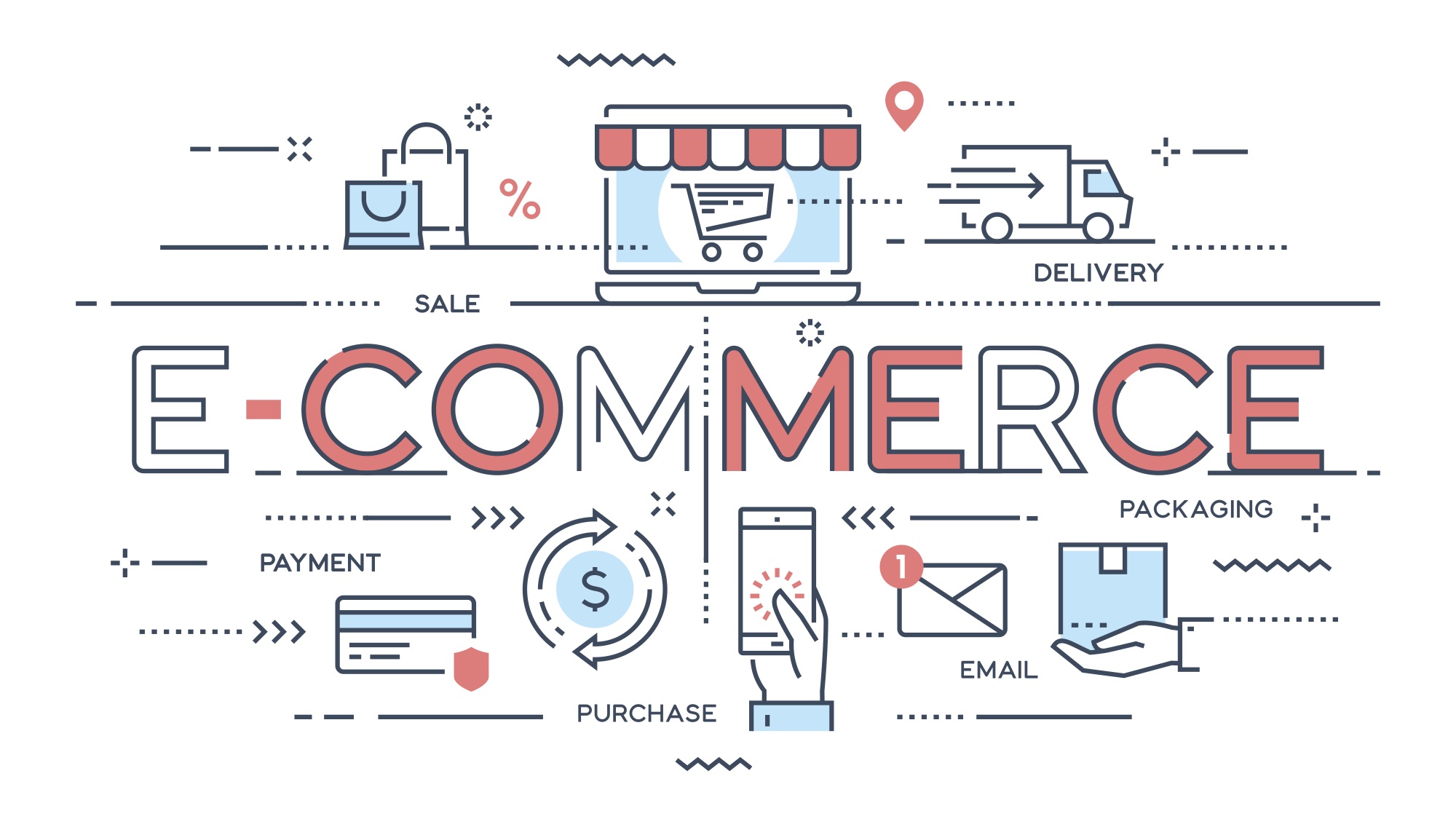Discovering the Potential of D2C Ecommerce: A Comprehensive Overview for Services
The D2C ecommerce model offers a considerable change in exactly how brands engage with customers. It enables companies to bypass conventional retail channels, cultivating deeper connections and possibly increased profit margins. This strategy is not without its intricacies. Comprehending the nuances of D2C ecommerce is important for brand names aiming to prosper. What approaches can they take on to navigate this developing landscape successfully? The answers might redefine their organization strategies.
Recognizing the D2C Ecommerce Version

Key Advantages of D2C Ecommerce for Brands
The D2C ecommerce version supplies brands considerable advantages, specifically relating to raised revenue margins. By getting rid of intermediaries, companies can retain a larger share of sales revenue. Additionally, this straight connection with clients promotes improved brand loyalty, encouraging repeat purchases and long-lasting involvement.
Enhanced Profit Margins

Boosted Brand Commitment
Structure on the financial benefits of D2C ecommerce, enhanced brand name loyalty arises as an additional necessary benefit for business involving directly with customers. By developing a direct connection, brands can cultivate deeper partnerships with their consumers, obtaining insights into behaviors and preferences. This direct communication enables more tailored advertising approaches, which reverberate highly with consumers. Furthermore, brand names have the possibility to manage their messaging and client experience, reinforcing brand name values and developing depend on. When consumers really feel a personal link, they are more probable to return, advocate for the brand, and join neighborhood engagement. Inevitably, boosted brand name loyalty not only drives repeat purchases however likewise grows a passionate customer base, more solidifying a brand's placement in the marketplace.
Difficulties Encountered by D2C Brands
D2C brands experience a number of substantial difficulties that can influence their success. Inventory administration problems can result in stock scarcities or excess, complicating operations and customer satisfaction. In addition, advertising and marketing budget restraints frequently limit the ability to effectively get to and engage target market.
Stock Administration Issues
Effective supply administration presents an awesome difficulty for numerous brands operating in the direct-to-consumer (D2C) area. These brands frequently come to grips with changing need, which can bring about overstock or stockouts, inevitably affecting consumer contentment and earnings. Furthermore, the lack of advanced inventory monitoring systems can cause disparities between actual supply levels and reported information, making complex order fulfillment. The diverse variety of products D2C brands usually provide also makes complex supply management, as variants in sizes, shades, and designs need even more careful oversight. In addition, numerous D2C services may battle with limited warehousing capabilities, resulting in ineffective use area and sources. Effective inventory monitoring continues to be a critical hurdle for D2C brands aiming for lasting growth and operational effectiveness.
Advertising And Marketing Budget Constraints
Navigating marketing budget constraints is a significant obstacle for lots of direct-to-consumer (D2C) brand names. Minimal funds frequently restrict these companies' ability to purchase comprehensive advertising and marketing methods, leading to lowered exposure in an affordable market. D2C brand names frequently face the need to take full advantage of roi (ROI) while targeting particular target markets effectively. This challenge is intensified by climbing prices in electronic advertising and the requirement to assign funds across several channels, consisting of social networks, search engines, and e-mail marketing. Numerous D2C brands must innovate cost-effective marketing remedies, leveraging organic growth techniques and influencer collaborations. Ultimately, efficiently maneuvering these spending plan constraints is crucial for sustaining development and achieving lasting earnings in the evolving ecommerce landscape.
Approaches for Developing a Successful D2C Ecommerce Service
As customers increasingly look for straight connections with brand names, establishing a successful D2C ecommerce organization requires a critical strategy that prioritizes consumer interaction and depend on. One efficient technique is to produce compelling brand name narratives that reverberate with target audiences, fostering emotional links. Utilizing social networks platforms can improve presence and help with two-way communication, permitting brands to involve straight with customers.Moreover, personalized experiences via tailored marketing initiatives can considerably boost customer retention and loyalty. Implementing loyalty programs and supplying exclusive deals can further incentivize repeat purchases.Streamlining the purchasing process is essential, making sure a straightforward interface that enhances the buying experience. In addition, clear communication pertaining to shipping and returns constructs trust More hints fund and motivates customer confidence.Finally, actively seeking client comments and replying to it demonstrates a commitment to renovation and customer complete satisfaction, critical aspects in the competitive D2C landscape.
Leveraging Modern Technology for Enhanced Customer Experience
In today's competitive D2C ecommerce landscape, innovation plays a critical duty fit consumer experiences. Organizations progressively utilize sophisticated tools such as fabricated intelligence, chatbots, and personalized algorithms to boost interactions and simplify the buying process. By integrating these technologies, brands can supply tailored item suggestions based on specific choices and purchasing behaviors, promoting a more engaging experience.Moreover, responsive web site designs and mobile applications assure that clients can access services effortlessly across numerous tools. Enhanced repayment options, consisting of digital budgets and one-click check outs, further simplify purchases, making it much easier for customers to make purchases.Data analytics also makes it possible for organizations to collect understandings into customer actions, allowing for continuous renovation of services and offerings. On the whole, leveraging technology not only improves customer fulfillment but additionally cultivates commitment, ultimately driving long-term success in the D2C ecommerce market.
Marketing Tactics to Drive D2C Sales
How can brand names efficiently record the interest of consumers in a saturated market? To prosper in the direct-to-consumer (D2C) landscape, brands should employ targeted marketing methods. Using social media systems, brand names can involve customers with interactive material, influencer partnerships, and user-generated messages. Individualized e-mail campaigns can also cultivate a sense of link, supplying tailored promos based on customer actions and preferences.Moreover, storytelling plays an essential role in distinguishing a brand's narrative, making it unforgettable and relatable. Brands need to invest in seo (SEO) to improve presence, guaranteeing their products are easily discoverable online. Additionally, leveraging data analytics permits companies to fine-tune their advertising and marketing techniques and comprehend consumer fads better. Inevitably, a multi-channel approach that combines imagination with data-driven insights can considerably enhance D2C sales, permitting brand names to stand apart in a congested industry.
Future Trends in D2C Ecommerce
With the fast evolution of innovation and consumer choices, the future of D2C ecommerce is positioned for considerable change. Emerging trends suggest a shift towards hyper-personalization, where brand names utilize information analytics to tailor offerings to private customer needs. This modification boosts consumer experiences, fostering commitment and engagement.Moreover, sustainability is coming to be an essential aspect, with customers progressively preferring brand names that focus on eco-friendly methods - D2C Ecommerce Agency. Companies are expected to take on transparent supply chains and lasting materials to meet this demand.The integration of artificial intelligence and enhanced truth will furthermore change the purchasing experience, allowing customers to envision products in their settings prior to purchase. In addition, social commerce is expected to grow, as systems like Instagram and TikTok help with seamless buying experiences straight within social media.These fads jointly symbolize a vibrant future for D2C ecommerce, emphasizing customer-centric methods and ingenious innovations that redefine customer communications
Frequently Asked Inquiries
What Industries Benefit A Lot Of From D2C Ecommerce?
The current concern highlights industries that grow through direct-to-consumer (D2C) ecommerce. Incredibly, fashion, charm, electronics, and food sectors utilize D2C versions to raise brand name loyalty, improve client connections, and enhance revenue margins effectively.
How Do Delivering Expenses Affect D2C Prices Methods?
Delivering prices significantly influence D2C pricing strategies. Companies have to balance these expenses with affordable pricing, taking into consideration client expectations and revenue margins. Effective administration of shipping can boost client complete satisfaction and drive sales in direct-to-consumer designs.
What Payment Options Should D2C Organizations Deal?
D2C companies ought to supply diverse settlement alternatives, including credit/debit cards, electronic wallets, check these guys out and get now, pay later on solutions. This range boosts customer comfort, boosts conversion prices, and satisfies different consumer choices in the online buying landscape.
Exactly How Can D2C Brands Handle Consumer Returns Successfully?
D2C brand names can manage consumer returns properly by carrying out straightforward return plans, offering pre-paid delivery labels, and ensuring timely refunds (D2C Ecommerce Agency). Clear interaction and streamlined processes enhance consumer complete satisfaction and encourage repeat business
What Legal Factors To Consider Exist for D2C Ecommerce Operations?
Legal considerations for D2C ecommerce operations include compliance with customer security regulations, data personal privacy regulations, intellectual home rights, and taxation requirements. Brand names must navigate these complexities to prevent lawful pitfalls and ensure smooth procedures. By removing middlemans, D2C brand names can supply affordable prices and cultivate a more intimate connection with their customers.The D2C design is characterized by its dependence on digital systems, making it possible for brands to use social media, on-line marketplaces, and their very own websites to involve with consumers directly. D2C ecommerce facilitates the collection of useful consumer data, allowing brands to tailor their offerings and advertising approaches efficiently, ultimately driving sales and boosting margins. Furthermore, brands visit the site have the opportunity to control their messaging and client experience, reinforcing brand worths and developing depend on. As customers significantly seek direct connections with brand names, establishing a successful D2C ecommerce organization needs a tactical technique that focuses on consumer interaction and depend on. D2C brands can deal with client returns efficiently by applying user-friendly return policies, providing pre paid delivery tags, and making sure timely reimbursements.